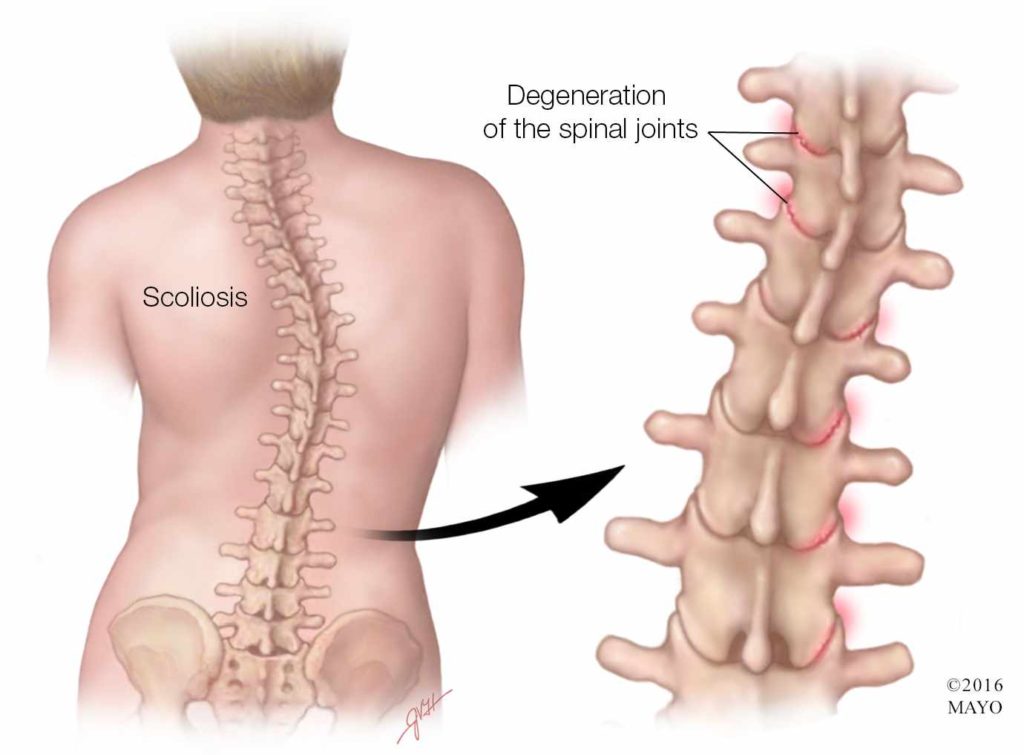
The main goal of treating degenerative scoliosis once it becomes symptomatic, is to reduce pain as well as any accompanying neurologic symptoms. Most treatments tend not to focus on correcting the curve because typically it is not the cause of pain. Most cases of degenerative scoliosis can be treated without surgery using self-care or assistance from a physician.
Strength and Mobility for Scoliosis
Increasing strength and mobility can help with improving most back pain, including scoliosis. Strength and mobility exercises can also help reduce future pain risks. Treatments to help strengthen the back and improve flexibility include:
- Physical Therapy from a qualified medical professional can help develop an exercise and stretching routine to meet each patient’s specific needs. Physical therapy can help keep soft tissues and joints flexible and bolster targeted muscles.
- Water Therapy exercises put less stress on the joints by using the body’s natural buoyancy.
- Massage Therapy can help boost blood circulation and loosen stiff muscles and joints.
Medications for Degenerative Scoliosis
Medications can either help eliminate pain, or reduce pain in addition to a physical therapy program. Medication options can include pain relievers or injections. While medications cannot heal what causes pain in degenerative scoliosis, they might be able to reduce pain so a person can complete daily activities.
Other ways to help reduce stress on facet joints and relieve pain include:
- Weight Loss Losing weight helps take pressure off the facet joints
- Bracing Since the possibility of a curve worsening is unlikely with degenerative scoliosis, a brace is used to restrict motions to relieve pain enough for a person to accomplish daily activities and ideally to help in physical conditioning.
- Manual manipulation Chiropractic care can help keep joints mobile as well as reduce pain.
- Nutrition Eating a diet of anti-inflammatory foods and nutritional supplements can help reduce inflammation. Drinking water regularly is also important for helping to keep spinal discs hydrated.
 Skip to content
Skip to content
